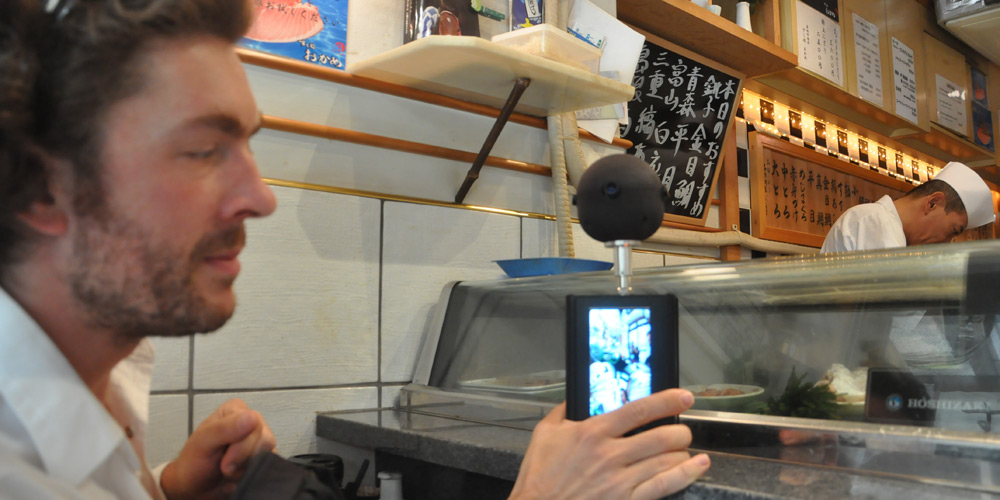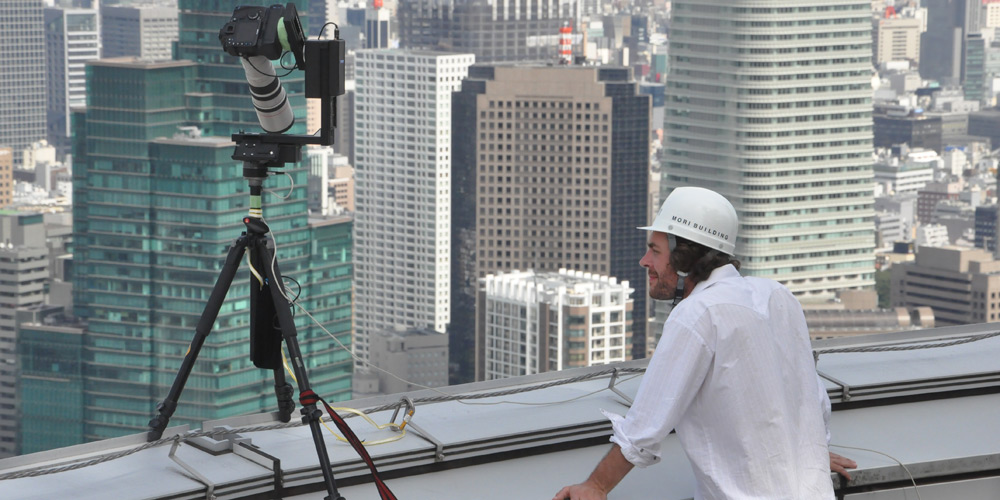He holds the Guiness World Record for the largest digital panoramic photo made from top of a tower in London. And he is the founder of the popular online platform 360cities.net where people share their views of cities around the world. The photographer Jeffrey Martin talks about how the door to 360 degree photography was opened, what equipment he used for this world record and we talk about the next thing in panoramic capturing: 360 degree videos. Jeffrey Martin will also be our guest during a Deep Space LIVE on June 12, 2014, 8 PM, at the Ars Electronica Center Linz.
How did you discover the world of 360 degree photography?
Jeffrey Martin: I discovered 360 degree panoramic photography when I bought my first digital camera which was a Canon Ixus, a very small camera at about a size of a pack of cigarettes. This camera had a very rude panoramic photo mode for taking overlapping pictures and the camera put them together. This was quite a revolution for me as I’m coming from analogue photography. This new thing really redefined for me what was possible to do with a camera. This was really fascinating to me. A friend of mine later had a stitcher that was a more advanced program for the PC for stitching panoramic images.
So I used that for a while and after becoming more and more fascinated with this topic I have decided that it made a lot of sense to combine panoramic images and a map of Prague. This was a very interesting idea because the city of Prague is such a beautiful place. It should be a very interesting sort of platform and helpful website with information for visiting tourists and people like that. That was the time when prague360.com was born in 2004. After that I founded 360cities.net in 2007. Since founding 360cities the company has grown to a few employers and the contributions of panoramic views were mad by more than 8.000 photographers form every country of the world. Totally there are more that a quarter of a million high-resolution spherical panoramic images.
You are holding the Guiness World Record for the worlds largest panoramic picture. Can you tell us something for the equipment you have used?
Jeffrey Martin: For this shot obviously it was necessary to create something in extremely high-resolution. What combination of sensor and lens would allow us to make such an image? We were forced to create an image that was larger than 272 gigapixels. So we went with the Canon 7D which is a 18 megapixel SLR. There are SLRs that have more megapixels and a larger sensor. At this time the Canon 7D had the highest density pixels which allowed us to make the largest spherical panorama. Along with the Canon 7D we used a Canon 400 millimeter of 2.8 lens and a 2x teleconverter for making them 800 millimeter lenses on this Canon 7D with an equivalent of something like 1.300 millimeters.
These cameras were mounted on tripod heads which allowed us to move the cameras in extremely precise intervals over a long period of time. So we had four sets of cameras and robot tripods, set up all around the tower and we executed the photography in 90 minutes total. This equipment took two days to set up and to debug completely. We had one very rainy day and then we had a day with very high wind. And on the third day there was reasonably a good weather to accomplish the photography.

Photo: Asahi Shimbun
Your „Sphericam“ makes it possible to capture 360 degree videos. What would be the best way to watch these kind of films? Unfortunately we humans only have a 180 degree field of vision…
Jeffrey Martin: That’s correct. The Sphericam is one of many 360 degree video cameras that are currently on the market. It’s true that humans can’t see these at the same time but it is a fact that we can turn our heads and see 360 degrees in that way. The way to watch 360 degree videos is to have a device that allows you to turn the picture. So this can be done with an iPad where a motion sensor is built in and the video can be watched by turning the iPad around the iPad axis, like a kind of a window into another world where the video is playing. And as you turn the iPad the video moves. And there are virtual reality headsets such as the „Oculus Rift“. And it is also possible to use a normal screen or a touch screen to turn the video with your finger or moving the mouse.
What will be the next technical steps in panoramic photography – let’s say within the next five years?
Jeffrey Martin: I guess the technology of 360 degree video will progress a lot. Especially because the world of virtuality headsets – the „Oculus Rift“ is poised to become very popular. This kind of device needs content. Besides of games it would probably have some cinematic content which needs to be 360 degree content. This will be video, it might be even stereoscopic video also known incorrectly as 3D. So, stereoscopic 360 degree video is currently not really possible. There are a number of technical challenges around that have to be solved. I expect this might be solved within the next five years. Also there are probably be more and more panoramic cameras that are built for this single purpose. Currently there is the Theta camera made by Ricoh and there might be other one that will come onto market.

Photo: Asahi Shimbun
Last but not least, the last question: What are you doing while you are waiting until the shots are finished?
Jeffrey Martin: So yes, that’s true that I have a robot that does some of my work for me but I’m usually not resting too much while the robot is shooting. Usually I supervise the equipment to make sure that it is working properly. That it is not missing any shots. For shooting large sequences: if the camera misses just one shot the entire sequence might be ruined. It is also important that the camera is positioned correctly and other things like that. While the robot is accomplishing some of my jobs in a better way that I can do by myself I still need to supervise to make sure that it is working correctly.
Jeffrey Martin will talk about 360 degree photography during a Deep Space LIVE at the Ars Electronica Center Linz on June 12, 2014, 8 PM.
